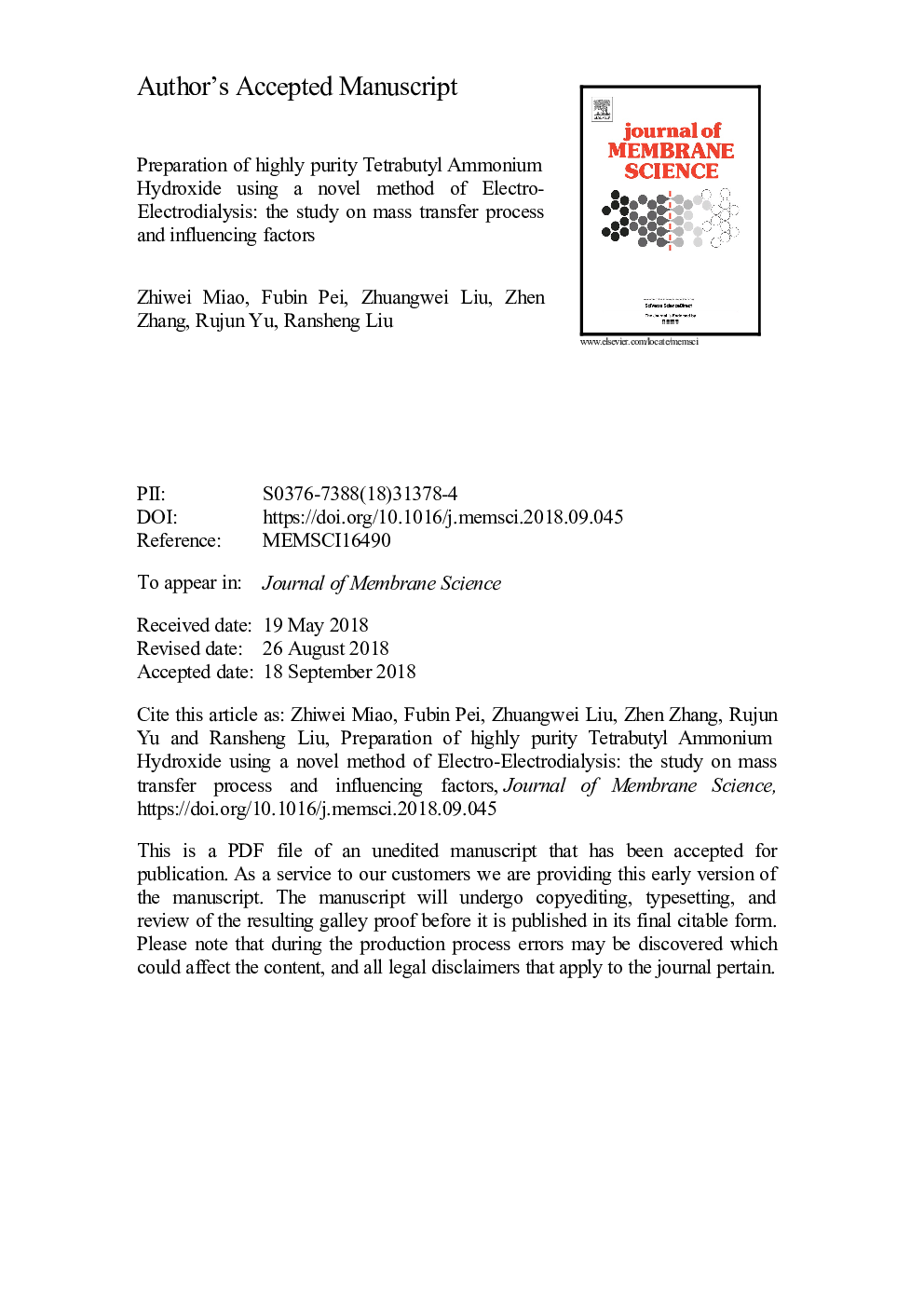| Article ID | Journal | Published Year | Pages | File Type |
|---|---|---|---|---|
| 11027992 | Journal of Membrane Science | 2018 | 34 Pages |
Abstract
Electro-Electrodialysis (EED) as a novel technology would effectively enable the preparation of Tetrabutyl Ammonium Hydroxide (TBAOH) from Tetrabutyl Ammonium Bromide (TBABr). In this work, NaOH and NH3·H2O of alkaline electrolyte were selected as anode solution to reduce the operating voltage, lower the cost and prevent the generation of bromine (Br2). The influencing factors of the current density, initial TBABr concentration, and electrolyte of the anode chamber were optimized by a triple-chambered EED stack, and also ion fluxes during the EED process were theoretically studied via an establishing mathematical model. The experimental results showed that under conditions of the optimum current density of 200â¯A/m2, initial TBABr concentration of 0.8â¯mol/L, and alkaline anolyte of 20â¯wt% NaOH, Br- content at a TBAOH concentration of 20â¯wt% was 8.5â¯ppm with the energy consumption of 1.86â¯kWâ¯h/kg and cost of 0.84 $/kg. Subsequently, continuous pilot experiments indicated that this proposed approach was promising for the efficient synthesis of TBAOH via direct splitting its halide, and further deployed at a commercial scale for the industry.
Related Topics
Physical Sciences and Engineering
Chemical Engineering
Filtration and Separation
Authors
Zhiwei Miao, Fubin Pei, Zhuangwei Liu, Zhen Zhang, Rujun Yu, Ransheng Liu,
